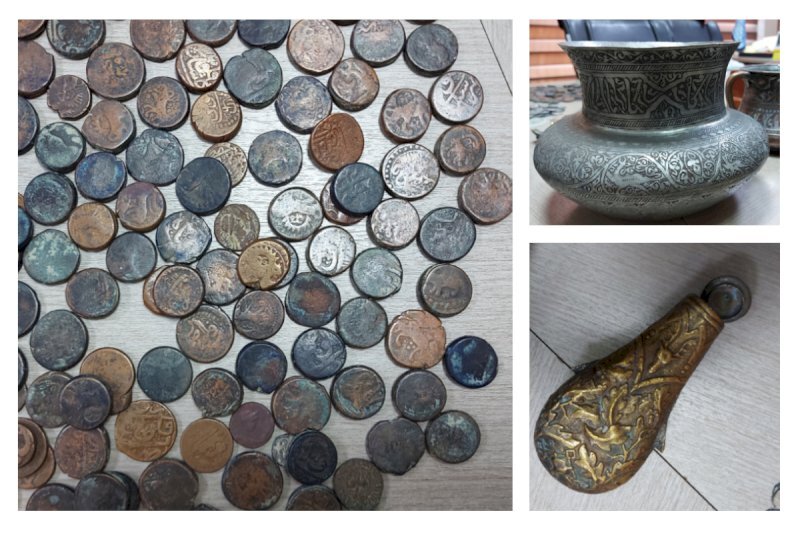Ancient antiquities confiscated by border security forces

TEHRAN - Iranian authorities have confiscated hundreds of relics, some of which date from the Parthian and Seleucid eras, from a cargo intended to be shipped from a southern port to the UAE.
Composed of 546 antiques and coins, the cargo was stopped by customs agents in Bandar Lengeh, a harbor city in Hormozgan province, CHTN reported on Monday.
The confiscated relics include 490 coins that date from various historical epochs including that of the Seleucids, Parthians, Safavids, Afsharids, and Qajars, the report said.
It also contains three silver and copper vessels from the Qajar era, a gunpowder container from the Zand era, four seals from the Qajar era, two arrowheads, and a small metal statue all dating from the first millennium of the Common Era, the report said.
From a historical perspective, Iran has long played a significant role in the ancient world. The country’s roots as a distinctive culture and society date to the Achaemenian period, which began in c. 550 BC. From that time the region that is now Iran —traditionally known as Persia— has been influenced by waves of indigenous and foreign conquerors and immigrants, including the Hellenistic Seleucids and native Parthians and Sassanids. Persia’s conquest by the Muslim Arabs in the 7th century CE was to leave the most lasting influence, however, as Iranian culture was all but completely subsumed under that of its conquerors.
According to Britannica, an Iranian cultural renaissance in the late 8th century led to a reawakening of Persian literary culture, though the Persian language was now highly Arabized and in Arabic script, and native Persian Islamic dynasties began to appear with the rise of the Tahirids in the early 9th century. The region fell under the sway of successive waves of Persian, Turkish, and Mongol conquerors until the rise of the Safavids.
With the fall of the Safavids in 1736, rule passed into the hands of several short-lived dynasties leading to the rise of the Qajar line in 1796. The country’s difficulties led to the ascent in 1925 of the Pahlavi line, whose ill-planned efforts to modernize Iran led to widespread dissatisfaction and the dynasty’s subsequent overthrow by the 1979 Islamic Revolution.
AFM
Leave a Comment